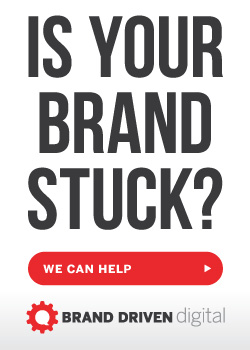It all comes down to the headline. You could have the most well-crafted ad or in this case, blog post, and yet if the headline isn’t right a majority of your audience will never make it there. What’s a copywriter/blogger to do? The answer lies in both looking forward to the demands of online media and backward to the lessons learned from marketers past. Here’s a set of rules to keep you from locking up at this critical decision point in your content creation process.
Build Your Headline on Traditional Media Fundamentals
I’ve said it before and I’ll say it again. You need to read John Caples’ Tested Advertising Methods (affiliate link). This timeless tome should be a part of every copywriter’s toolbox. We’re all taught the core ad DNA early on — AIDA — Attention, Interest, Desire, and Action. Caples can be your best friend when it comes to the attention part of creating a headline. Heck, there are three chapters about headlines alone in this 278-page book! The title may sound a bit ‘old timey’ but these tested methods still hold true today like beginning headlines with “How to” or asking a question. Perhaps the bigest take-aways are the findings on the four basic types of headlines.
- Self-interest
- News
- Curiosity
- Quick, easy way
Think about these categories for a bit and you’ll realize that all make compelling blog headlines, especially ‘self-interest’ and the ‘quick and easy way.’ Too often we throw out all of the lessons learned over generations of appealing to audiences in favor of what’s new. As marketers, we owe it to ourselves to be well-rounded and versed in the traditions of our trade. Understanding these time-tested rules ultimately gives us the leg up in leveraging the full power of new media channels like blogs and social media to build brand-driven communities.
To summarize, if you write headlines for any media you need to read your Caples.
Optimize Your Headline for New Media
And now — as Bill Maher would say — time for the new rules. Search engine spiders love to crawl through headlines. Make sure that in addition to being attention-getting and provocative that your headline contains the keywords you want your content aligned with online. Your headline leads off in so many ways. First, as far as the architecture of your post goes, your headline is on the front lines and will be seen first. An attractive headline on Google is going to generate more search results over time and increase your relevance. A strong, keyword-rich headline is also going to be more sharable (and attention-getting) across social channels like Twitter, LinkedIn, and Facebook.
Perhaps where the traditional media and new media rules could most potentially be in conflict is with regard to the third Caples quality of inviting ‘curiosity’ in a headline. In traditional media, you have time and visuals you can use to support an abstract headline. Online we can still build curiosity with provocative headlines provided we find ways to include relevant keywords such as this recent post.
One last keyword tip — spell out the names of any people and places in post headlines to make sure you’re tied to the higher-traffic terms. If it comes down to a shorter headline vs. a more optimized headline, you want the latter in the long-run.
So there you have it — a quick and easy system for creating attention-getting, keyword rich headlines by leveraging tested traditional media tips with an eye to the fundamentals of online media.
OK, those are a couple of my headline secrets. What’s in your headline toolbox?










[…] 1)。 “鲜为人知的方式”公式:你有多少次使用这个公式来写一个引人注目的标题?公式中的每个单词都是情感驱动的。这些类型的头条新闻通常会在他们看到之后流入人们的脑海。 […]
[…] headline? Each of the words in the formula is emotionally driven. These types of headlines usually pop into people’s minds, even well after they’ve seen […]
[…] headline? Each of the words in the formula is emotionally driven. These types of headlines usually pop into people’s minds, even well after they’ve seen […]
[…] headline? Each of the words in the formula is emotionally driven. These types of headlines usually pop into people’s minds, even well after they’ve seen […]
[…] headline? Each of the words in the formula is emotionally driven. These types of headlines usually pop into people’s minds, even well after they’ve seen […]
[…] headline? Each of the words in the formula is emotionally driven. These types of headlines usually pop into people’s minds, even well after they’ve seen […]
[…] headline? Each of the words in the formula is emotionally driven. These types of headlines usually pop into people’s minds, even well after they’ve seen […]
[…] headline? Each of the words in the formula is emotionally driven. These types of headlines usually pop into people’s minds, even well after they’ve seen […]
[…] headline? Each of the words in the formula is emotionally driven. These types of headlines usually pop into people’s minds, even well after they’ve seen […]
[…] headline? Each of the words in the formula is emotionally driven. These types of headlines usually pop into people’s minds, even well after they’ve seen […]
[…] headline? Each of the words in the formula is emotionally driven. These types of headlines usually pop into people’s minds, even well after they’ve seen […]
[…] headline? Each of the words in the formula is emotionally driven. These types of headlines usually pop into people’s minds, even well after they’ve seen […]
[…] of the words in the formula is emotionally driven. These types of headlines usually pop into people’s minds, even well after they’ve seen […]
[…] of the phrases within the system is emotionally pushed. These kinds of headlines often pop into people’s minds, even effectively after they’ve seen […]
[…] of the words in the formula is emotionally driven. These types of headlines usually pop into people’s minds, even well after they’ve seen […]